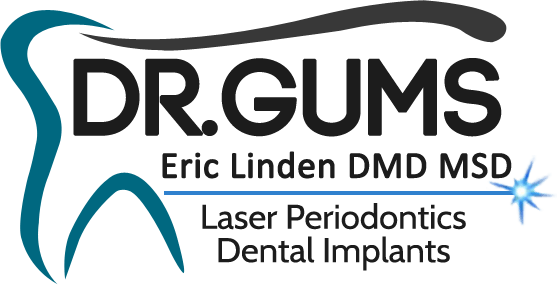Q: I’m trying to debate on whether I should do LANAP (Laser Assisted New Attachment Procedure) to save my patient’s teeth, or just extract them and do GBR (Guided Bone Regeneration) for an implant-supported fixed partial denture. My patient is a 25 year old rock musician with a 13 pack-year history of smoking and several lower lip piercings. His chief complaint was severe mobility of teeth #21-28 (mandibular left first premolar to right first premolar; 34 to 44). Upon oral examination, the gingiva was generally severely inflammed and average pocket depth was 8 mm, rising to 12 mm in the area prompting his complaint. He also had severe root recession. There was BOP (Bleeding on Probing) generally. CBCT shows severe labial, mesial, and distal resorption in the affected area. I referred him to a general physician to discuss smoking cessation, and recommended he remove his piercings. Now, I gave him two treatment options:
- LANAP and splinting of the mobile teeth during the healing, followed by gingival graft.
- Extractions, GBR, and an implant-supported fixed partial dentures.
I told him that I would not extract the teeth and just fit a Maryland Bridge (resin bonded fixed partal denture), as it would not allow him to eat properly, and decelerate the rate of the bone loss. I also told him that LANAP would allow him to keep his natural teeth and be the least invasive option, but that it may not work. GBR would require me to harvest bone from his ramus, which means an additional surgical site, six months of healing before I can place implants, and then six months longer before I can restore them, and the risk of implant failure, surgical site infection, postoperative pain, etc. I strongly advise treatment option #1, but I would like your opinion. I am not able to post radiographs or photographs.
A: After a thorough periodontal exam including an accurate set of digital X-rays including vertical bite wings, please take a close look at the occlusion and the stabilization that would be REQUIRED for the LANAP protocol to be most effective. We have done type IV cases, and stabilized many hopeless teeth over the last 7 years. Please also evaluate the patient’s medical and dental history as well as habits such as smoking.
I would suggest a thorough verbal and written informed consent in the event that extractions might need to be considered in the future. Of course, the option of dental implants also needs to be discussed.
There is no “magic wand” with any procedure, but this protocol offers the patient the possibility of some potentially positive results.
—-
This Q&A was posted on a dental website. After In Dr. Linden posted the above answer, someone posted a question about Juvenile Periodontitis. In response to that, Dr. Linden added the following:
I think it is important to understand that there are many periodontal options available for our patients that have existed for several decades that have proven effective both in practice and in clinical trials. In our practice and in the post graduate clinic at Columbia University School of Dental Medicine and Columbia Presbyterian Medical Center(more), we try to incorporate lasers of different wavelengths in addition to traditional techniques to achieve the best results for our patients.
The paucity of specific clinical trials on Juvenile Periodontitis doesn’t imply that LANAP and other laser modalities with specific goals and target tissues cannot help our patients clinically. There are and will be more clinical trials regarding the use of different lasers and the effects on the periodontal tissues.
We evaluate each case on an individual basis and we decide what our goals are and what reasonably can be expected. There is a dangerous potential for untrained doctors to think that laser therapy can “do it all”. The same is true of traditional therapy. I believe that lasers, wavelengths, target tissues, goals, diagnosis, medical and dental history, occlusion, and restorative considerations all have to be considered for treatment plan options that will be best for the patient. “One size does not fit all.”
Dental professionals should keep an open mind and continue to educate themselves as new technologies and techniques become available.

